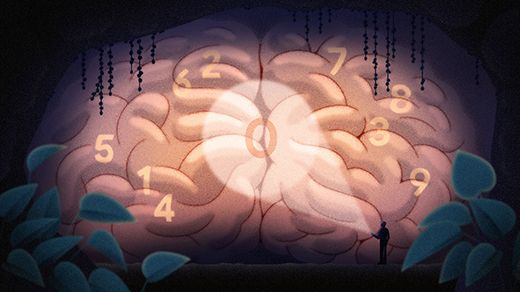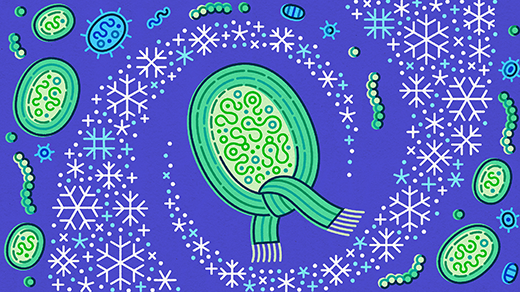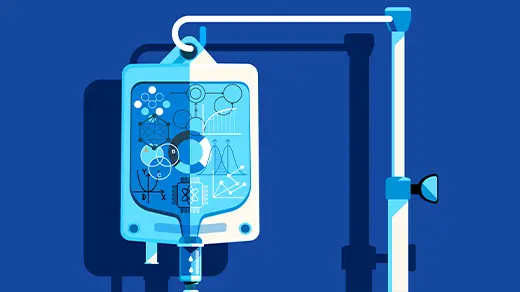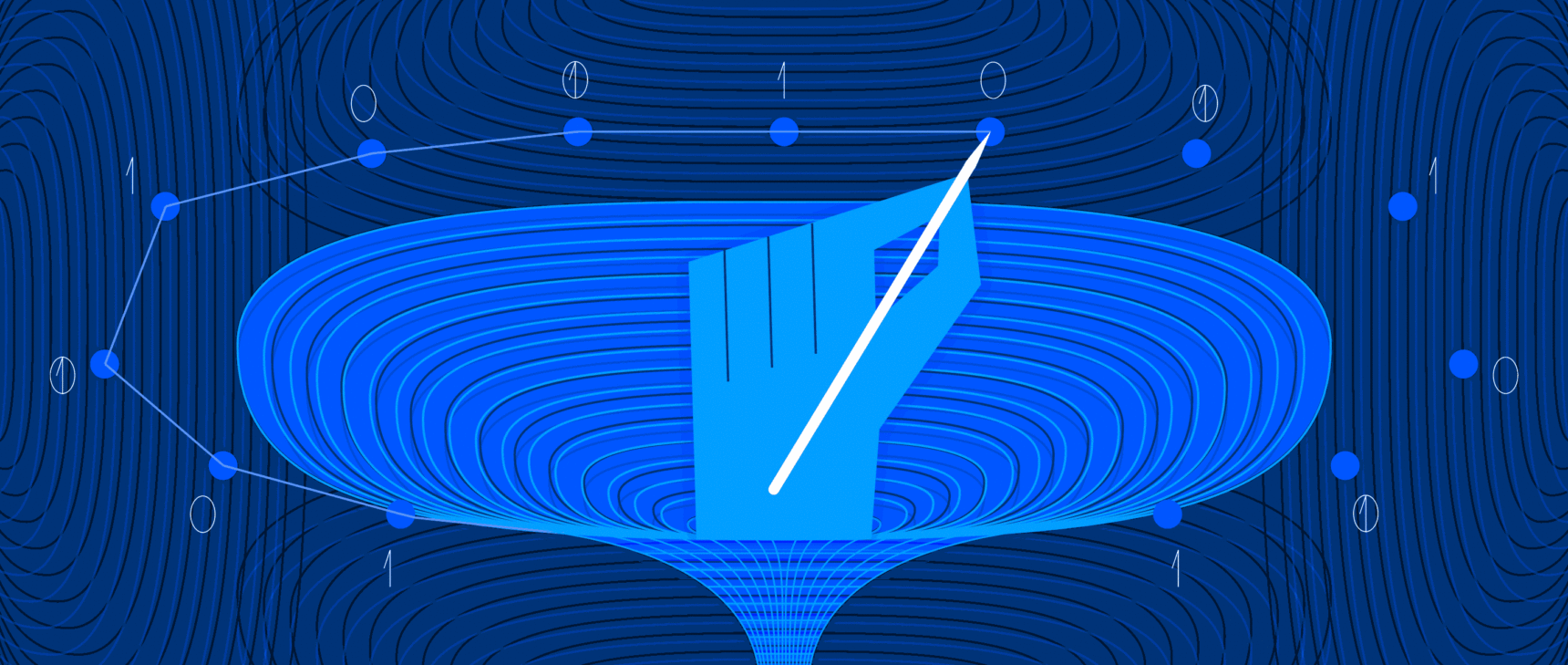What Is an Individual? Biology Seeks Clues in Information Theory.
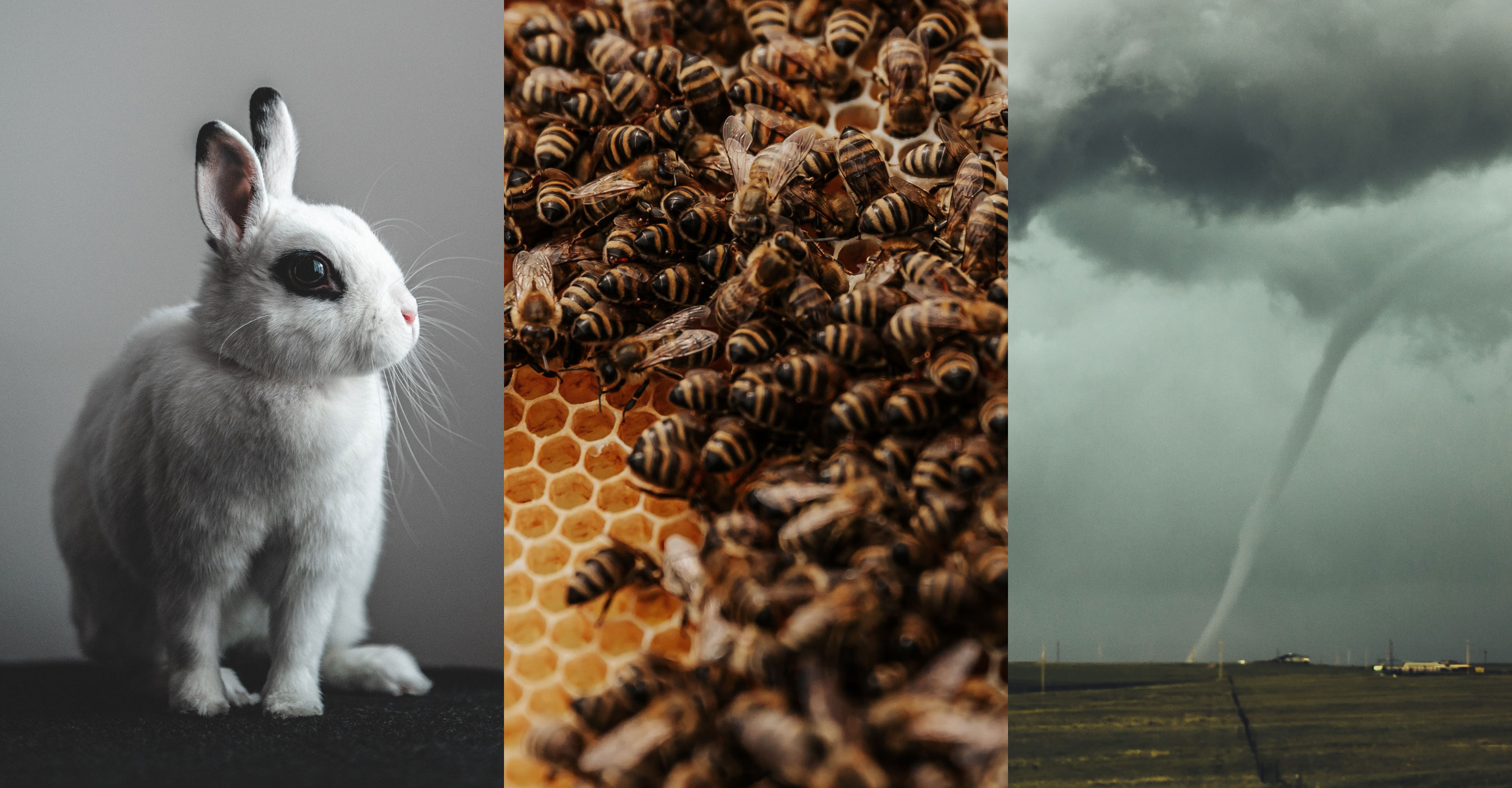
What is an individual? Researchers are using information theory to develop a more general, objective definition that encompasses the kinds of relationships that individuals as different as a single animal, a colonial organism or a weather phenomenon have with their environment.
Introduction
More than half a billion years ago, during the Ediacaran Period, a surreal world of life overran the ocean floor. Its bizarre, soft-bodied animals had physical forms that defy the imagination: quilted blobs and ribbed discs, segmented tubes and upturned bells, tapered spindles and slender cones. They were perhaps the planet’s first large multicellular organisms — but they soon went extinct without leaving behind any modern descendants; trace fossils in ancient slabs of sandstone and quartzite are all that remain of those utterly weird and fantastical creatures.
Because of that weirdness, paleontologists still debate even the most basic questions about them: how they developed, how they ate and reproduced, even where one fossilized individual leaves off and another begins. Were those animals single organisms or colonies of smaller individuals, akin to the Portuguese man-of-war? Where did their jellylike bodies end and their environment begin?
The task of distinguishing individuals can be difficult — and not just for scientists aiming to make sense of a fragmented fossil record. Researchers searching for life on other planets or moons are bound to face the same problem. Even on Earth today, it’s clear that nature has a sloppy disregard for boundaries: Viruses rely on host cells to make copies of themselves. Bacteria share and swap genes, while higher-order species hybridize. Thousands of slime mold amoebas cooperatively assemble into towers to spread their spores. Worker ants and bees can be nonreproductive members of social-colony “superorganisms.” Lichens are symbiotic composites of fungi and algae or cyanobacteria. Even humans contain at least as many bacterial cells as “self” cells, the microbes in our gut inextricably linked with our development, physiology and survival.
These organisms are “so intimately connected sometimes that it’s unclear whether you should talk about one or two or many,” said John Dupré, a philosopher of science at the University of Exeter and director of Egenis, the Center for the Study of Life Sciences.
Yet being able to make such distinctions is extremely important to scientists. Ecologists need to recognize individuals when disentangling the complex symbioses and relationships that define a community. Evolutionary biologists, who study natural selection and how it chooses individuals for reproductive success, need to figure out what constitutes the individual being selected.
The same applies in fields of biology dealing with more abstract concepts of the individual — entities that emerge as distinct patterns within larger schemes of behavior or activity. Molecular biologists must pinpoint which genes out of many thousands interact as a discrete network to produce a given trait. Neuroscientists must determine when clusters of neurons in the brain act as one cohesive entity to represent a stimulus.
“In a way, [biology] is a science of individuality,” said Melanie Mitchell, a computer scientist at the Santa Fe Institute.
And yet, the notion of what it means to be an individual often gets glossed over. “So far we have a concept of ‘individual’ that’s very much like the concept of ‘pile,’” said Maxwell Ramstead, a postdoctoral researcher at McGill University. “If there’s a pile of sand, you intuitively know this is a pile of sand. But a pile is not a precisely defined thing. It’s not like after 13 grains, it moves from a collection to a pile.”
Such a fundamental definition is absent in part because “biology as a field is completely under-theorized,” said Manfred Laubichler, a theoretical biologist at Arizona State University. “It’s very much still an empirically driven discipline.”
Now, a few groups of scientists are setting out to change that — and they’re beginning by formalizing the concept of the individual according to a set of principles and measurements that they hope will guide biology into a new era.
A Verb, Not a Noun
When it comes to defining biological individuals, we tend to rely on what we can observe and measure. Cells are bounded by membranes, animals by their skin; we can sequence DNA and demarcate genes in those sequences. Above all, our definitions privilege the organism and the characteristics associated with it: an entity that’s physically separated from its environment, that has DNA and can replicate, that is subject to natural selection.
But that is not the only way to view living things — nor is it always the best way. “I always say, if Darwin was a microbiologist, we’d have a very different theory of evolution,” said David Krakauer, an evolutionary theorist and president of the Santa Fe Institute. “You wouldn’t have started with the survival of the fittest organism. It would have been a very different premise.”
Krakauer is on a quest to uncover a more natural, objective way to identify biological units, an operational metric for quantifying individuality based on the intrinsic dynamics of the system being studied, without biases or limits imposed by external circumstances.
Jessica Flack, an expert in the study of collective phenomena also based at the Santa Fe Institute, was similarly frustrated by the arbitrary ways that concepts of individuality were applied in the study of natural selection and other biological processes. So the pair teamed up, and over the better part of a decade — which included a move from Santa Fe to Wisconsin and back again, and the recruitment of several more colleagues to the project — they developed what they hoped was “a much more open-ended, fundamental working definition that doesn’t assume we know the answer, or know too much of the answer, a priori,” Flack said.
At the core of that working definition was the idea that an individual should not be considered in spatial terms but in temporal ones: as something that persists stably but dynamically through time. “It’s a different way of thinking about individuals,” said Mitchell, who was not involved in the work. “As kind of a verb, instead of a noun.”
It’s not an entirely novel approach. In the early 1800s, the French zoologist Georges Cuvier described life as a vortex, “more or less rapid, more or less complicated, the direction of which is invariable, and which always carries along molecules of similar kinds, but into which individual molecules are continually entering, and from which they are continually departing; so that the form of a living body is more essential to it than its matter.” Many philosophers and biologists have taken up this “process view,” in which organisms and other biological systems exist not as fixed objects or materials but as flowing patterns and relationships in a river of flux.
Unfortunately, “once gene theory took over, it became a biology of things,” said Scott Gilbert, a developmental biologist at Swarthmore College. But now that’s starting to change again. “Twentieth-century biology was a biology of things,” he said. “Twenty-first-century biology is a biology of processes.”
And scientists have developed the tools to consider those processes in formal, precise ways. “We can take a lot of these things that we’ve been doing with an object language in biology,” said Eric Smith, an origins-of-life researcher at the Santa Fe Institute, and “realize that we can do all the same things, and do them better, with a statistical and distributional language.”
Many Degrees of Individuality
Krakauer and Flack, in collaboration with colleagues such as Nihat Ay of the Max Planck Institute for Mathematics in the Sciences, realized that they’d need to turn to information theory to formalize their principle of the individual “as kind of a verb.” To them, an individual was an aggregate that “preserved a measure of temporal integrity,” propagating a close-to-maximal amount of information forward in time.
Their formalism, which they published in Theory in Biosciences in March, is based on three axioms. One is that individuality can exist at any level of biological organization, from the subcellular to the social. A second is that individuality can be nested — one individual can exist inside another. The most novel (and perhaps most counterintuitive) axiom, though, is that individuality exists on a continuum, and entities can have quantifiable degrees of it.
“This isn’t some binary function that suddenly has a jump,” said Chris Kempes, a physical biologist at the Santa Fe Institute who was not involved in the work. To him as a physicist, that’s part of the appeal of the Santa Fe team’s theory. The emphasis on quantifying over categorizing is something biology could use more of, he thinks — in part because it gets around tricky definitional problems about, say, whether a virus is alive, and whether it’s an individual. “The question really is: How living is a virus?” he said. “How much individuality does a virus have?”
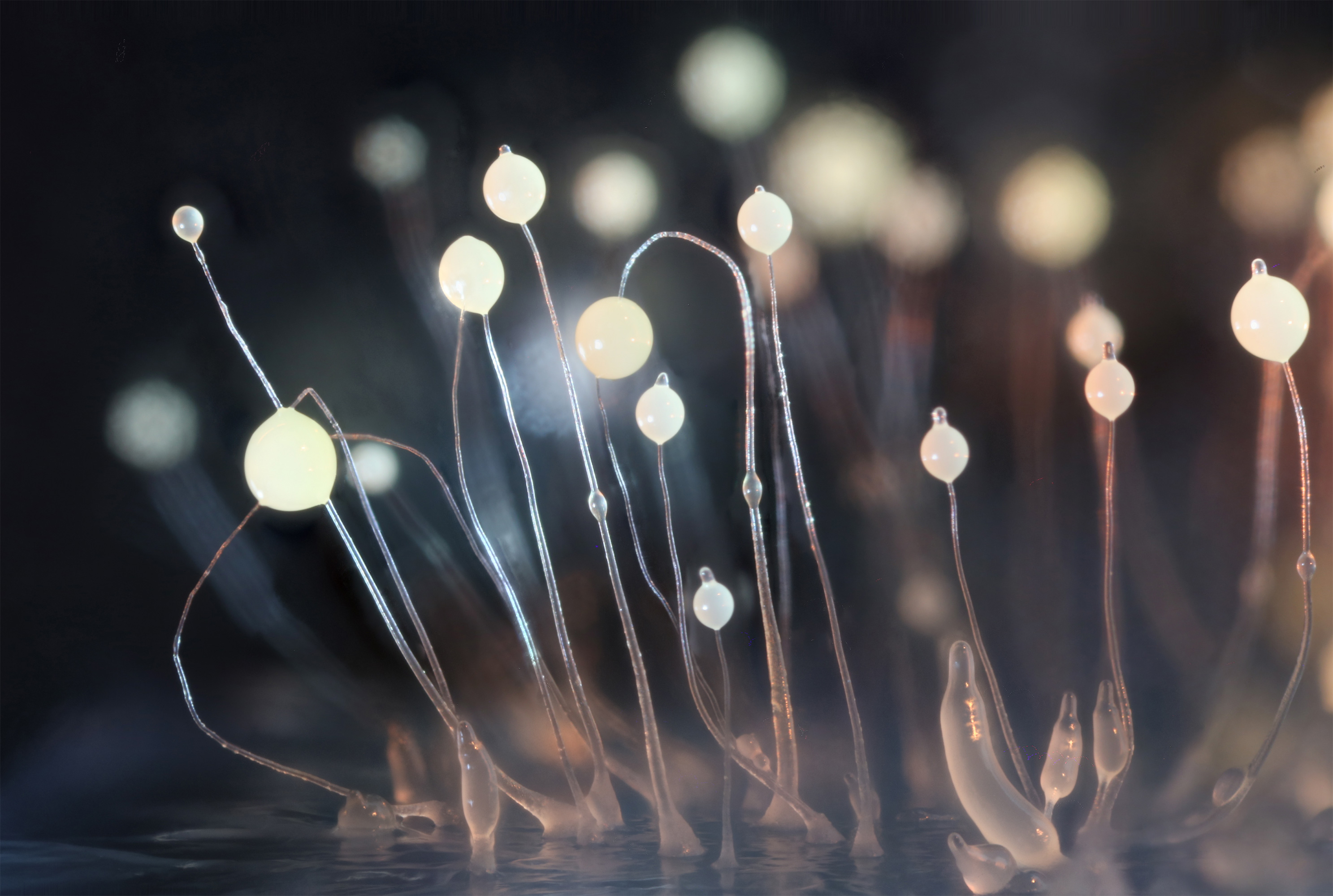
In this cellular slime mold, hundreds of free-living amoebas have massed and sacrificed themselves to build stalks so that others can spread spores. Throughout the kingdoms of life, working definitions of individuality can seem fluid.
Krakauer, Flack and the rest of their group then set out to define “lenses” for spotting such individuality in complex, noisy environments. “Think about building a kind of microscope which would allow me to see information being propagated forward in time,” Krakauer said. They described a mathematical framework that breaks information flows down into parts and evaluates individuality based on how different combinations of environmental influences and internal dynamics can predict a system’s future states.
Based on these gradients of information flow, the Santa Fe team distinguishes three types of individuality. The first is the organismal individual, an entity that is shaped by environmental factors but is strongly self-organizing. Nearly all of the information that defines such an individual is internal and based on its own prior states. “This is a lens that, if you wore it, would allow you to see humans and mammals and birds,” Krakauer said.
The second type of individuality is the colonial form, which involves a more complicated relationship between internal and external factors. Individuals in this category might include an ant colony or a spiderweb — distributed systems that are “partially scaffolded” by their environment but still maintain some structure on their own.
The third type is driven almost entirely by the environment. “If you remove the scaffolding, the [entity] would fall apart,” Krakauer said. It’s like a tornado, which dissipates under the wrong temperature and moisture conditions. The very first life to arise on Earth was probably like this, Krakauer added.
This “information theory of individuality,” as the researchers call it, offers a very general way to think about biological units. They hope it will inspire algorithms that could “allow you to extract figure from ground, organism from environment,” Krakauer said. Such algorithms could be applied to streams of data collected over time to pinpoint correlations of information that signify the emergence of individuals.
Within this theory, individuals can be cells, tissues, organisms, colonies, companies, political institutions, online groups, artificial intelligence or cities — even ideas or theories, according to Krakauer. “What we’re trying to do is discover a whole zoo of life forms that extend far beyond what we have conventionally called living,” he said.
Such individuals might be entities we’ve never considered because they don’t conform to the scales or functions or distributions in space with which we’re familiar — entities “that don’t jibe with our common intuition of what an individual is,” Flack said.
“Our senses are very limited. What we can process in our brains is, in the end, limited, even though it’s considerable,” said Martin Biehl, a researcher at Araya, an AI company in Tokyo, who is developing a mathematical approach for identifying individual agents in artificial systems. “So where do we take this confidence from, that we are not missing tons of hidden individuals?”
Life Not as We Know It
This new way of recognizing individuals may turn out to have many advantages. Perhaps certain gene networks and signaling molecules act as individuals at the level of the cell, while others are spread out between cells. Maybe cancer is better understood as the result of certain cells gaining a higher degree of individuality than their neighbors.
Krakauer and Kempes, among other scientists, hope to apply this measurement-based approach to origins-of-life questions: “Planetary bodies are rich, complicated environments, and chemistry is a huge combinatorial space,” Kempes said. “Under all these different conditions … we’re probably going to be surprised at how many types of origins of life you can get.” He wants to use metrics like Krakauer’s to identify underlying properties or general principles that might be shared by those diverse origin stories.
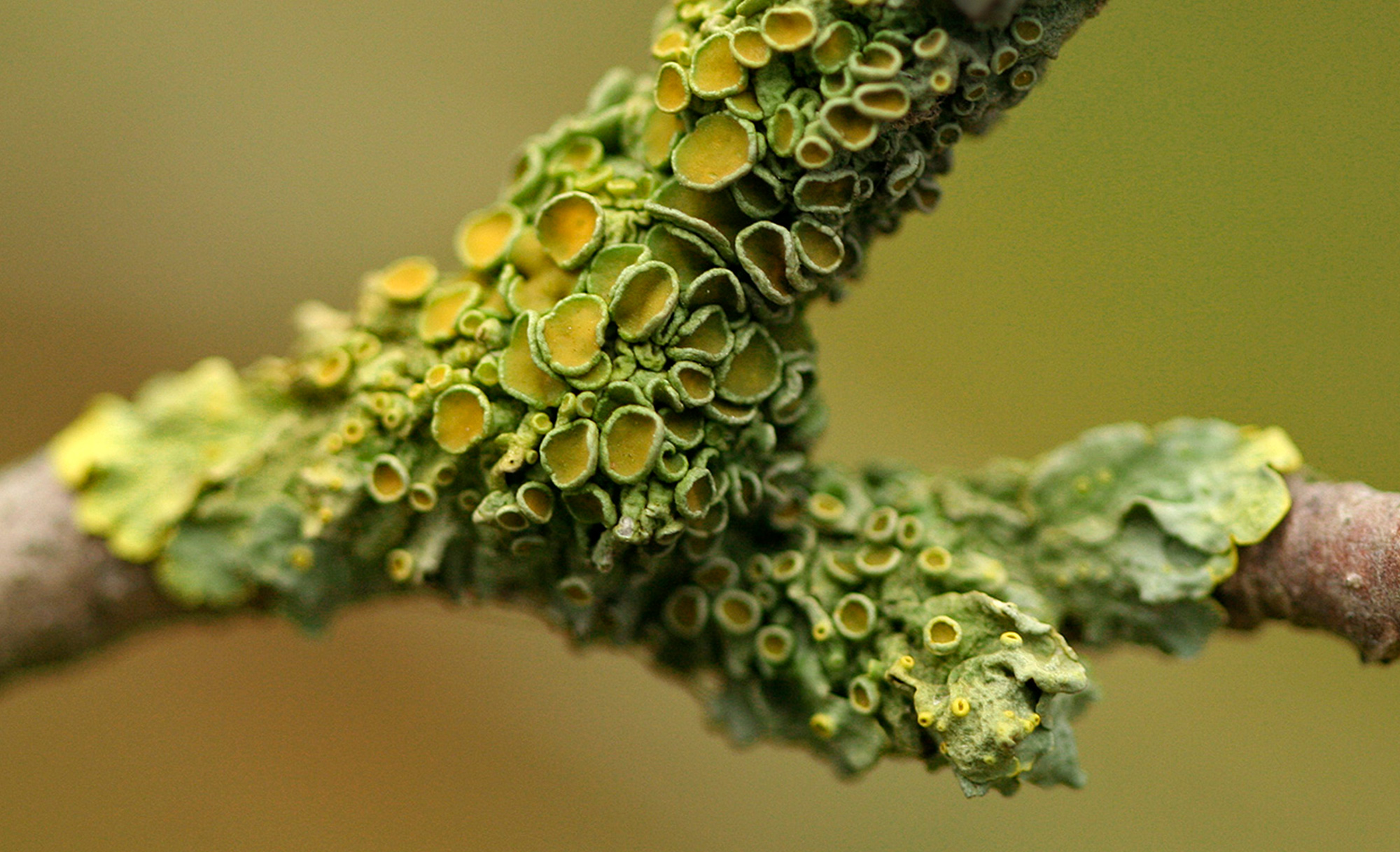
Lichens are composite organisms: They consist of photosynthetic algae or cyanobacteria growing within filaments of a fungus. Yet this partnership is so intense and distinctive that they function as a single organism.
“People want to focus on the things that we know that all the life we have shares,” Kempes added. “But that is very particular to the evolutionary history that we’ve had on this planet, and the particular origin of life that we happened to have on this planet. That’s not a very general way to think about life.” It certainly won’t help identify life beyond our own solar system, which could be completely beyond human comprehension, like the sentient ocean of plasma that the writer Stanisław Lem imagined in his 1961 novel Solaris.
But a broader definition of individuality won’t just allow scientists to search for new kinds of life. They can also probe how different boundary conditions might affect an entity’s degree of individuality and its relationship to its surroundings. For instance, how “individual” is an ecosystem? What happens to that individuality if a species disappears or a crucial environmental factor changes? What happens if an organism’s boundary is drawn not around its skin but further out to include some of its environment, too? The answers could affect conservation efforts and our understanding of how much interdependence there is among organisms, species and their physical surroundings. And if researchers can gain a better understanding of the factors that have the greatest impact on a system’s individuality, they might learn more about evolutionary transitions like the emergence of multicellularity.
“I think that defining fundamental quantities helps us to suddenly start to see dynamics that we didn’t see before, and understand processes that we hadn’t thought of before,” Kempes said — in the same way that defining and understanding temperature allowed the formulation of new theories in physics.
Maintaining Individuality
Other scientists doing theoretical research on individuality don’t necessarily agree that Krakauer and Flack’s theory offers the best or most useful framework for finding answers. To Ramstead at McGill, for example, the fact that Krakauer and Flack’s framework could apply equally well to any kind of system isn’t entirely a mark in its favor. He agrees with the Santa Fe group’s starting assumptions and their use of information theory, but he says that their definition needs something extra — a way to set biological entities apart from entities in nonliving systems (like hurricanes), based on information flow.
Ramstead hypothesizes that their approach is missing a consideration of how an individual maintains the boundary that delimits itself. “Organisms aren’t just individuated,” he said. “They have access to information about their individuation.” To him, the kind of information that Krakauer and Flack’s framework uses might not be “knowable” to an organism: “It’s not clear to me that the organism could use these information metrics that they define in a way that would allow it to preserve its existence,” he said.
As an alternative, Ramstead is collaborating with Karl Friston, a renowned neuroscientist at University College London, to build a theory around Friston’s “free-energy principle” of biological self-organization. Ramstead sees this line of thinking as compatible with Krakauer and Flack’s formalism but usefully constrained by an account of how a biological entity maintains its own individuality.
The free-energy principle asserts that any self-organizing system will look as if it generates predictions about its environment and seeks to minimize the error of those predictions. For organisms, that means in part that they are constantly measuring their sensory and perceptual experiences against their expectations.
“You can literally interpret the body of an organism as a guess about the structure of the environment,” Ramstead said. And by acting in ways that maintain the integrity of those expectations over time, the organism defines itself as an individual apart from its surroundings.
Ancient Fractal Forms
The Santa Fe team’s theory is currently “an important proof of principle” — “an organization scheme [that can] create some reasonable order in that wild west of biology,” Laubichler said. But the researchers acknowledge that they are still nowhere close to creating useful algorithms that could put these concepts into practice.
Still, some biologists are already finding their own ways of putting informational approaches to individuality to good use. Their work offers a taste of how the theoretical ideas being pursued by Krakauer, Flack and Ramstead might one day be applied.
Jennifer Hoyal Cuthill, a research fellow at the University of Essex, studies the organisms that thrived during the Ediacaran Period. “To work on fossils or life forms from very deep time, that’s almost as close as you might get on planet Earth to exobiology,” she said. “So we’re kind of confronted with that practical problem of how do you recognize individuals?”
The solutions that she and her colleagues have developed relate to the concepts that Krakauer and Flack described, she said — in particular, to their emphasis on the persistence of information through time.
Take Hoyal Cuthill’s recent work on rangeomorphs, fernlike animals that could grow to more than six feet tall, with fractal, branching fronds that radiated from a central stem attached to the seafloor. Early analyses frequently grouped the rangeomorphs with sea pens, a more familiar class of invertebrates that resemble quill pens. Because a sea pen is actually a colonial organism — an aggregate of individual, tentacled polyps — that’s what scientists thought rangeomorphs were, too. Until about 10 years ago, that is: Researchers later proposed that a specific growth program could have produced the rangeomorph shape in single individuals instead.
That research can be thought of in terms of information theory. For instance, Hoyal Cuthill examines the animal’s fractal form, which reflects its growth history in the same way that the concentric rings in the trunk of a tree record its growth. “It’s persisted through time; we can see its past retained within it,” she said.
The growth history is also a record of information flows in the rangeomorphs’ environment, such as information about the diffusion of dissolved organic carbon in the ocean water around them. By studying the persistence of that information, Hoyal Cuthill and her colleagues formulated hypotheses about how the rangeomorphs changed throughout their lives. The environment acted as a scaffold for their development, significantly affecting their size and shape — even though the balance of internal and external forces leaves them as coherent organisms rather than colonies by the Santa Fe team’s definitions. Applying the language of Krakauer and Flack’s paper, “we can see the traces of both intrinsic, organismal individuality and environmental determination, even in what are likely to be some of the oldest known animals,” Hoyal Cuthill said.
Such attempts to use information flows, in theory or practice, to carve nature at its joints are “the beginning of sketching out ideas and concepts that could be potentially foundational for new areas of biology,” Hoyal Cuthill said.
Laubichler agreed. “For the life sciences or biology to grow up as a scientific discipline,” he said, “it needs to do something like this.”
